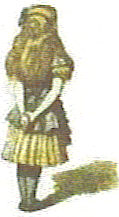
Omega=?
Imagine for one moment that this is all wrapped in a bubble(universe). Our views of earth,
the hills and valleys, of the gravitational perspective, as I showed of earth as "time variable measure" now brought to conceptual realization for society.
Einstein's playful example of the hotstove, remember?

The picture you refer belongs to
ISCAP and if you "refresh" that page a couple of times, you will see a number of pictures. They are important. Especially the "Lagrange points" How this perspective is used with satellites in space travel.

This is a very important perception that is not understood very well. I have another picture that will explain it well. I have maybe given to much to absorb here?
Hey heyDo you believe that Einstein will last forever and that presently visualized elementary particles are all there are?
What happens on a cosmological scale is indeed explanable as I have shown.
The trouble is when we move our perception to the quantum probabilities. I surmized these things in context of how we would determined information from the horizon, yet the value of energy determinations here ask us to consider the value assigned to particle inclinations. These energy determinations are still valid within context of the conformal field theories, as the map shows of Bekenstein bound.
At this site you will find the new black boxes and calibration samples for the LHC Olympics! See:
Revolutions for ChangeFor example test runs in the olympics of the LHC to be done.
Blackhole Production Blackhole production of course created some concern, while it was being answered in terms of strangelet developement. This spoke to blackhole production directly. But low and behold, how would any of us considered the context of the cosmic particle collisions that go on all the time, and from it, secondary particle showers that are presented to earth as microstate blackhole production, which quickly dissipates.
So you might have thought indeed strangelet production from microstate blackholes in terms of cosmic particle colllisions?

But the point is learning to identfy the very beginning, and like most I thought the singualrity was like a pea, while the energy valuation and quark gluon plasma created, has some effects that we have to consider? That were counter intuitive.
Produced tunnelling? :)
Thus, this changes the very dynamics of constructs that are being present here, in a philsophical format for consumption by a society that had reached critical density?
While the energy valuation here would created certain effects. How would you apply this to the sociological developement of a society that welcomes, and from it, is born new possibilities?
Paradigmal changes perhaps?
Mental ConstructsHow would such a definition as mental construct find it's place among our interactions?
Would we not need some "mental construct," to say that if the processes exist and we are fundamentally part of that process, are there different ways in which to measure our valuations in relation to how we might now see earth?

So there is this "touching" in the way you have said it at a fundamental level and then there is the touching at another level? I am justing tryng to understand it from a frame of reference, yet the idea, ideal, is much finer in it's measure? Where did it begin?
electron wave packet repelling eachother by exchanging virtual photons
As you know this process is also encapsulated as part of GR.

When you engage Gauss's thinking, Gauss's coordinates, it is not without "seeing in ways" that one might not be accustomed too, that we ask, how might we treat this subject?

Yet, you look for "the consistancy" that is thread through all the geometric incursions we send our perceptions into? So what is this consistancy?
While we entertain these distances, quark to quark measures, how will this ocnsistancy of thought be held to "a measure" while we send perception all the way down to the reductionist levels, and find that such a fluid allows new physics and idealogical valuations to be now interpeted according to the measures enforced?

Of course the answer is very simplistic in my books and is one uesed to maintain this consistancy, yet, we would find there is no new geometry or new physics as far as we know, from that beginning point?













